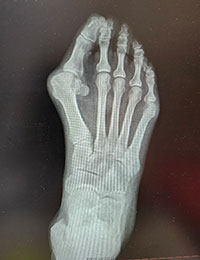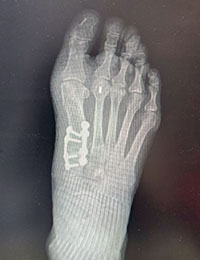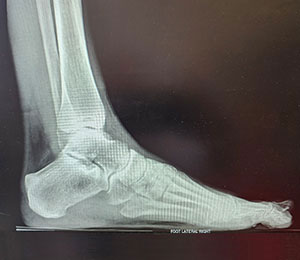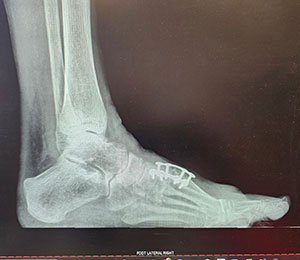Connect With Us
Bunions
Bunions Treatment in Overland Park, KS
 Have you noticed a painful bony bump in your big toe? You may have a bunion.
Have you noticed a painful bony bump in your big toe? You may have a bunion.
Bunions protrude on the side of the foot and can rub against your shoe causing irritation and pain. They can also cause painful calluses to form under your big toe.
How do I treat it: You can start by wearing shoes that are wide at the toe box to prevent rubbing and irritation. You can also try a bunion pad that can be purchased online or in the drugstores.
Also, icing frequently may help reduce inflammation and pain.
If that doesn’t help, contact your doctor.
Inserts and or orthotics- inserts can be purchased over the counter but are not specific to your feet but can be beneficial to help cushion and support your feet and cost is around 30-70 dollars. Custom orthotics are made by a Podiatrist or Orthotist that are specific to your feet but cost more than inserts between 300 and 600 dollars.
Lapiplasty
Before and After Lapiplasty® 3D Bunion Correction
Perform by Ali Davis, DPM, FACFAS
 Before
Before  After
After  Before
Before  After
After 